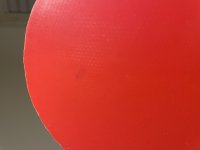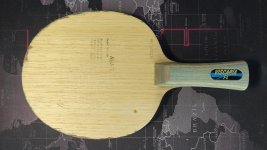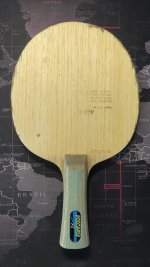This user has no status.
Member
Having tried some blades, the feeling is different. For example
I suppose this is what people refer to as a "sweet spot". But is this only a feeling issue or does this sweet spot have effect on the quality of the shot itself? I know that the smaller sweet spot teaches a beginner where to hit, but I'm interested in the physical properties. How does hitting the sweet spot affect the response of the racket, as opposed to hitting nearer the edge? Does the Viscaria produce the most "clean" shots because the sweet spot is largest?
- Primorac (5ply) has a small spot where the hit feels and sounds loud and clear. Moving away from this spot feels increasingly like a dead 'thunk'.
- Hadraw VK has a much larger spot where the hit sounds and feels clear, almost like a bell.
- Viscaria (5+2ALC) produces a sharp and clear crack almost over the entire blade.
I suppose this is what people refer to as a "sweet spot". But is this only a feeling issue or does this sweet spot have effect on the quality of the shot itself? I know that the smaller sweet spot teaches a beginner where to hit, but I'm interested in the physical properties. How does hitting the sweet spot affect the response of the racket, as opposed to hitting nearer the edge? Does the Viscaria produce the most "clean" shots because the sweet spot is largest?














